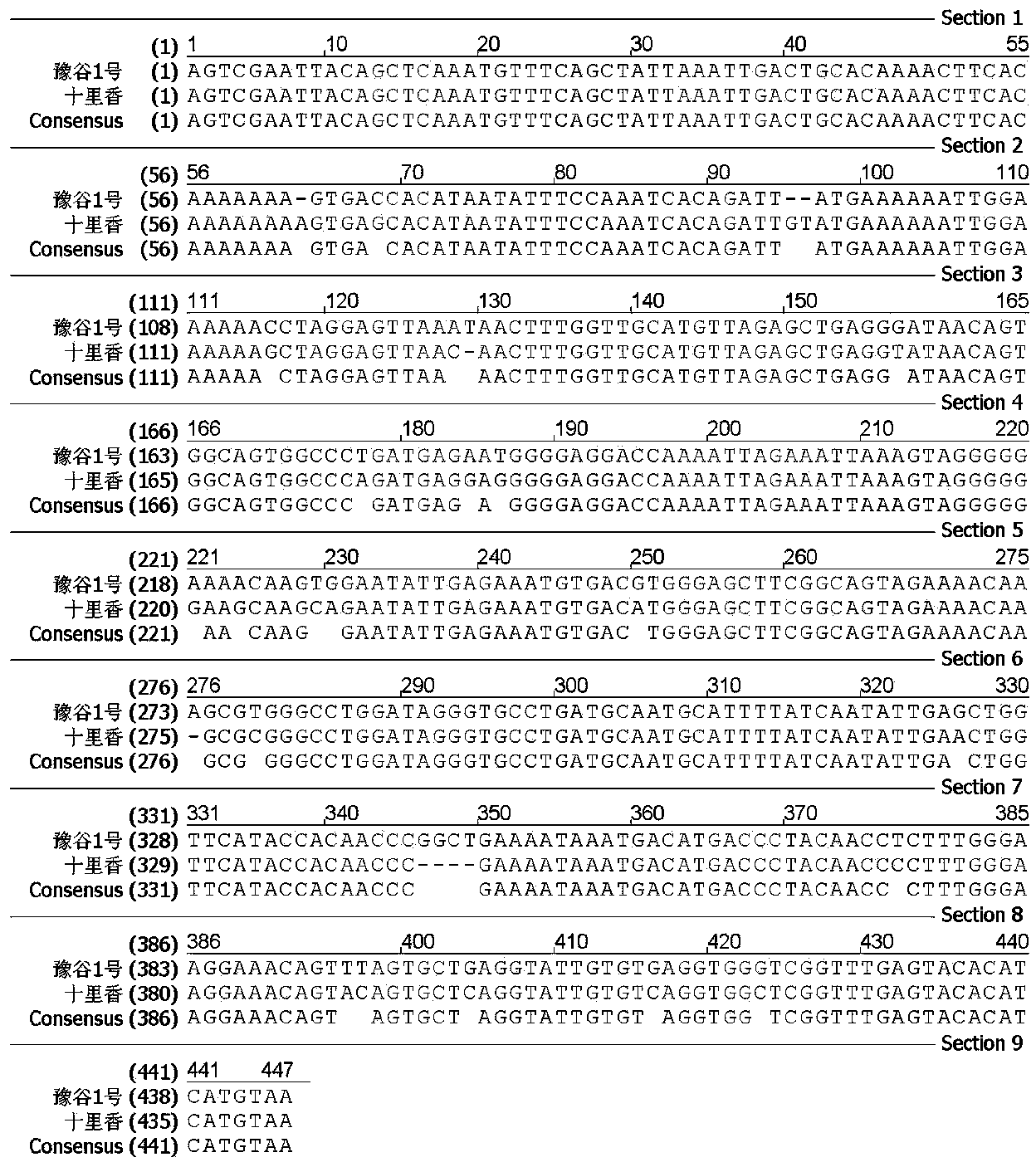Setaria italica anti-rust gene coseparated molecular marker and detection method thereof
A technology of molecular markers and co-segregation, which is applied in the determination/inspection of microorganisms, biochemical equipment and methods, DNA/RNA fragments, etc., can solve the problems of inability to assist breeding, and achieve planting cost saving, efficiency improvement, and accelerated breeding The effect of the process
- Summary
- Abstract
- Description
- Claims
- Application Information
AI Technical Summary
Problems solved by technology
Method used
Image
Examples
Embodiment 1
[0034] Example 1. Obtaining a co-segregated molecular marker SNP+InDel / SLAF-75316 of a millet anti-rust gene
[0035] 1. Test materials
[0036] Using the source of high resistance to millet rust, Shilixiang, the high-susceptibility variety Yugu No. 1, and its hybrid F 1 , F 2 group.
[0037] 2. Identification of material rust resistance
[0038] Pair of parents Shilixiang and Yugu 1 and F 1 , F 2 Individual plants were identified for resistance inoculation. At the 5-leaf stage of millet, collect the virulent race A of millet rust 57 Monospora strain 93-5, prepare spore suspension (concentration of 1.0×10 5 individuals / mL) spray inoculated and moisturized for 20 h. After 12 days, when the susceptible plants were obviously onset, the onset of the parents and offspring were investigated, and the response type of each plant was determined. The survey standard of reaction type refers to the method of Liang Kegong et al., and is divided into 5 grades: grade 0 (immunity) - ...
Embodiment 2
[0081] Example 2: Marker genotype analysis of millet resistant materials using markers.
[0082] Millet susceptible materials include Kuanjiu, Xiaoxiangmi, Pin 103 (unified number is 27389), Pin 104 (27390), Pin 111 (27397), Pin 143 (27429), Pin 149 (27435), Pin 176 (27462) , Pin 206 (27609), Pin 207 (27610), Pin 208 (27611), Pin 211 (27614), Pin 212 (27615), Pin 213 (27616), one each, provided by the National Institute of Crop Science, Chinese Academy of Agricultural Sciences Preserved in the germplasm bank; Jingu rice was bred and preserved by the Millet Research Institute of Hebei Academy of Agricultural Sciences.
[0083] Millet disease-resistant materials include Ji Chuang No. 1, which is obtained by our research group by crossing with other millet varieties and breeding for many years, with ten lixiang as the male parent. It has the same stable anti-rust characteristics as ten lixiang.
[0084] We used this marker to conduct SNP+InDel / SLAF-75316 marker analysis on the a...
PUM
 Login to View More
Login to View More Abstract
Description
Claims
Application Information
 Login to View More
Login to View More - R&D
- Intellectual Property
- Life Sciences
- Materials
- Tech Scout
- Unparalleled Data Quality
- Higher Quality Content
- 60% Fewer Hallucinations
Browse by: Latest US Patents, China's latest patents, Technical Efficacy Thesaurus, Application Domain, Technology Topic, Popular Technical Reports.
© 2025 PatSnap. All rights reserved.Legal|Privacy policy|Modern Slavery Act Transparency Statement|Sitemap|About US| Contact US: help@patsnap.com

